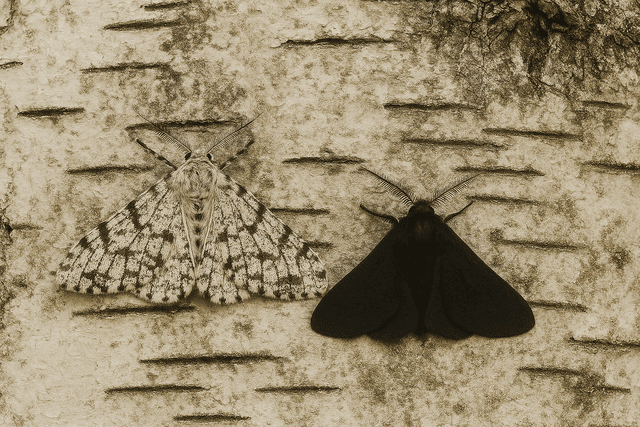Myths about teaching can hold you back
- Year 9
A model of natural selection
I can use a model of natural selection to make predictions about how a population will change over time.
- Year 9
A model of natural selection
I can use a model of natural selection to make predictions about how a population will change over time.
These resources will be removed by end of Summer Term 2025.
Switch to our new teaching resources now - designed by teachers and leading subject experts, and tested in classrooms.
These resources were created for remote use during the pandemic and are not designed for classroom teaching.
Lesson details
Key learning points
- A simple model can be used to demonstrate natural selection, e.g. picking up green and white cocktail sticks from grass.
- The model can be used to make predictions about how a population will change over time due to natural selection.
- The prediction may change if the environmental conditions change (e.g. if the grass becomes frosty/snowy).
Keywords
Natural selection - Organisms that are better adapted to their environment are more likely to survive, reproduce and pass on their genes to their offspring.
Model - Scientists use models as simpler representations of complex things and ideas.
Hypothesis - An idea based on observations about how something works.
Prediction - A scientific prediction is a testable statement about a possible outcome of an experiment.
Common misconception
Thinking that populations of organisms stay the same forever.
This model clearly demonstrates that populations change over time due to natural selection, with advantageous traits (e.g. camouflage) becoming more common in the population.
To help you plan your year 9 science lesson on: A model of natural selection, download all teaching resources for free and adapt to suit your pupils' needs...
To help you plan your year 9 science lesson on: A model of natural selection, download all teaching resources for free and adapt to suit your pupils' needs.
The starter quiz will activate and check your pupils' prior knowledge, with versions available both with and without answers in PDF format.
We use learning cycles to break down learning into key concepts or ideas linked to the learning outcome. Each learning cycle features explanations with checks for understanding and practice tasks with feedback. All of this is found in our slide decks, ready for you to download and edit. The practice tasks are also available as printable worksheets and some lessons have additional materials with extra material you might need for teaching the lesson.
The assessment exit quiz will test your pupils' understanding of the key learning points.
Our video is a tool for planning, showing how other teachers might teach the lesson, offering helpful tips, modelled explanations and inspiration for your own delivery in the classroom. Plus, you can set it as homework or revision for pupils and keep their learning on track by sharing an online pupil version of this lesson.
Explore more key stage 3 science lessons from the Adaptations, competition, natural selection and evolution unit, dive into the full secondary science curriculum, or learn more about lesson planning.

Content guidance
- Risk assessment required - equipment
Supervision
Adult supervision required
Licence
Prior knowledge starter quiz
6 Questions
Q1.Individuals with advantageous characteristics are more likely to survive and reproduce. This leads to a process called natural .
Q2.There are differences between these two individuals of the same species of peppered moth. Which word do we use in science for these differences?

Q3.Which moth has an advantage in the competition to hide from predators?

Q4.Which moth is the most likely to survive to reproduce?

Q5.The genes for which type of colouration are most likely to become more common in later generations of the moths?

Q6.Most of the trees in the moths’ habitat change to have light-coloured bark. Put the statements in order, to explain how this could cause the population of moths to change.

Assessment exit quiz
6 Questions
Q1.In the model of natural selection, what do the cocktail sticks represent?

Q2.In the model of natural selection, what do the students picking up the cocktail sticks represent?

Q3.There is variation in colour between the individual cocktail sticks. The green cocktail sticks are better to stay hidden from predators in the grass.

Q4.Because they are better camouflaged against the grass, the green cocktail sticks have an in the competition to hide from the predators.

Q5.Whose prediction is most likely to come true after several rounds of the natural selection model experiment?



Q6.The natural selection model experiment is played on grey concrete instead of green grass. Whose prediction is most likely to come true after several rounds of the experiment?






